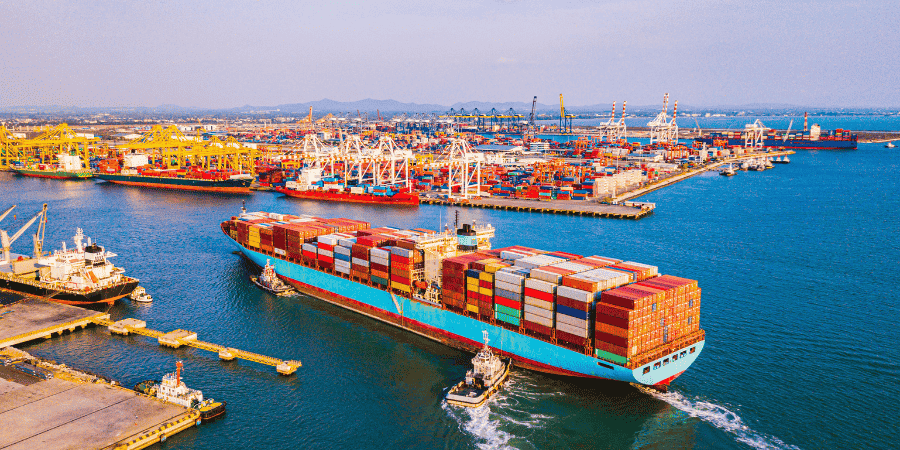
Direct export vs. local distributors: comparing pros and cons
Summary
The article examines one of the More complex strategic decisions in internationalization of enterprise: the Choice between direct export and distribution through local partners. This decision goes far beyond an assessment of costs and revenues, shaping up as the definition of the relationship the company intends to establish with foreign markets. Direct exporting offers total control of business strategy, higher profit margins and direct feedback from the market, but requires substantial investment in foreign infrastructure and specialized expertise, exposing the company to greater operational and financial risks. In contrast, relying on local distributors provides speed of penetration, exploitation of the partner's territorial knowledge and reduced economic exposure, but sacrifices some of the strategic control and sales margins. The optimal choice depends on multiple factorsi: target market size, product maturity, corporate financial capabilities, and long-term goals. Often the most pragmatic solution is a hybrid approach, starting with distributors and then evolving to direct exports once a presence is established. Whichever strategy is chosen, success requires a Rigorous planning that integrates market analysis, legal assessments and economic-financial projections, often with the support of consultants who specialize in internationalization.
In the context of business internationalization, the choice between. direct export e use of local distributors represents one of the most sensitive strategic nodes. Each option brings with it specific advantages and risks, which must be evaluated in light of business objectives, available resources, product characteristics and target market dynamics. Below is an in-depth analysis of the two solutions, with the aim of providing companies with concrete elements to guide their export strategy.
Two export strategies compared: operating models of direct export and local distribution
In the process of internationalization, the choice between direct export and local distribution takes on a strategic importance that goes far beyond a simple question of costs and revenues: it is about defining the relationship the company intends to establish with foreign markets and its customers.
In the’direct export, the company decides to independently manage every aspect of international penetration, from identifying the most promising geographical areas to after-sales support. This means conducting in-depth market analysis to assess demand, competition, and regulatory barriers, make direct contact with potential buyers-both business and consumer, negotiate contracts that comply with local laws, and internally organize all logistical activities, from transportation to customs to widespread distribution. While requiring significant investment, such as in the establishment of branches or representative offices and the creation of exclusive agent networks, this mode allows for Maintain total control over processes, preserving higher profit margins and ensuring immediate feedback from the market, which is crucial for calibrating products and services in a timely manner.
Distribution through local partners: strategic advantages and trade-offs
In contrast, adopting a local distribution model means relying on a partner already established in the target country, as a distributor, importer, or wholesaler, which is responsible for warehousing, promoting and selling products in the territory. In this scenario, the exporting company remains focused on production, delegating to the distributor not only warehouse management and optimization of stock levels, but also sales promotion-with BTL initiatives, relationships with the sales network, and organization of local events-and often the first level of technical assistance and customer care. Although this approach significantly reduces financial exposure and limits the fixed costs associated with direct establishment, it inevitably implies a Partial divestment of strategic control and sales margins, thus necessitating a very precise agreement on service levels, minimum purchase volumes and mechanisms for contract renewal or termination.

Advantages and disadvantages of direct export
The use of direct export offers the company the opportunity to Govern the entire customer experience abroad, ensuring tight control over brand positioning and pricing strategies: defining commercial policies independently enables timely reaction to market changes, modulating promotions and rate adjustments in perfect harmony with branding objectives. In addition, by eliminating middlemen, the company can benefit from Significantly higher profit margins, retaining the entire distribution share and maximizing profitability, an advantage particularly relevant for niche or high-tech products. Direct contact with the end customer enhances the ability to listen to and analyze feedback, enabling Quickly refine the offerings in competitive terms, improve service quality and consolidate loyalty. In parallel, in-house management of international processes-from logistics to customs regulations to complex contract negotiations-contributes to the development of strategic business skills, strengthening know-how and preparing for launching into additional markets.
Operational complexities and financial risks of the direct model
On the other hand, direct export involves significant economic and organizational commitments: the cost of opening foreign offices, hiring specialized personnel, and establishing a dedicated sales network introduce a significant mass of fixed costs, whose financial return Can only manifest in the medium to long term. On the management side, the complexity of coordinating customs, tax and contractual procedures in different regulatory environments requires skilled resources and increases the risk of errors, with possible penalties or delays in deliveries. Added to this is direct exposure to operational and financial risks related to insolvencies, trade receivables, and currency fluctuations, elements that weigh on the company's cash flow. Finally, setting up a proprietary export structure generally proves to be slower than other entry solutions, prolonging go-to-market times and requiring careful planning to avoid delays in product availability abroad.
Pros and cons of local distributors
Relying on local distributors allows you to To enter the foreign market with great speed, leveraging already established sales networks, strategically placed warehouses, and optimized sales channels.This synergy drastically reduces go-to-market time and facilitates Interaction with customers, institutions and operators in the area, facilitating a smoother and more coordinated product launch. In addition, the distributor brings as a dowry an in-depth knowledge of local buying behavior, cultural nuances and competitive dynamics, information that allows promotion and positioning strategies to be calibrated in a highly targeted manner, minimizing the risk of choices marked by stereotypes or generic perceptions. The transfer of part of the operational activities to the local partner Significantly reduces the need for direct investment in foreign infrastructure and fixed costs while relieving the company of the burden of managing commercial, credit and logistical risks, responsibilities that fall to the distributor, as the party more accustomed to the procedures and practices of the target market.
Strategic limitations and risks of partner dependence
Despite this, the choice of a local distribution model inevitably introduces some strategic limitations: control over brand positioning and pricing policies is attenuated, as the distributor tends to independently define discounts, promotions and price lists according to its own view of the market, with possible discrepancies from the parent company's overall image and strategy. Such operational delegation also leads to reduced profit margins. Dependence on the partner takes on a critical weight: any shortcomings in business performance, financial difficulties or contractual defaults can jeopardize market access and adversely affect corporate reputation, while the indirect relationship with the end customer Limits the ability to acquire quality feedback in a timely manner, slowing down supply adjustments and jeopardizing strategic readiness.
Selection criteria and best practices
The decision between direct export and local distributors should be based on a’SWOT analysis specific to each target market, taking into consideration:
- Size and sales potential: high-volume markets may justify direct investment; for niche or low-penetration markets, the distributor is often preferable.
- Product maturity stage: new products or innovations require closer control (direct export); established lines can benefit from the distribution network.
- Financial and organizational capabilities: SMEs with limited resources rely on distributors to reduce economic exposure; structured companies can support foreign subsidiaries.
- Regulatory and logistical barriers: complex procedures or poor infrastructure favor the local partner.
- Long-term strategy: to build a global brand, direct export provides greater consistency; for quick penetrations, local distribution remains a tactical choice.

Market approach strategies: toward an informed choice
There is no “one-size-fits-all” model: the choice between direct export and local distributors must be evaluated on a case-by-case basis, Balancing cost, risk, and strategic objectivesi. In many cases, a hybrid approach--starting a presence with distributors and then evolving to direct export once critical mass is reached--is the most balanced solution.
Whatever path one chooses, success comes through a rigorous planning phase: The feasibility study must combine market research, legal assessments and economic-financial simulations in order to outline a path consistent with the company's mission and stakeholder expectations. Transparent governance and monitoring tools shared with foreign partners allow the initiative to maximize its effectiveness and consolidate, over time, A strong and sustainable presence in international markets.
The complexity of these strategic decisions often requires the support of consultants specialized in international expansion, who can accompany companies in defining the path best suited to their sectoral specificities and operational size. Octagona, an internationalization consulting firm, supports companies from all sectors in defining and implementing the most effective export strategies. For more information and to evaluate together the opportunities of your international project, contact us.





